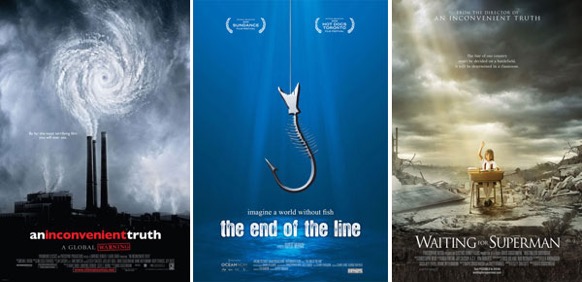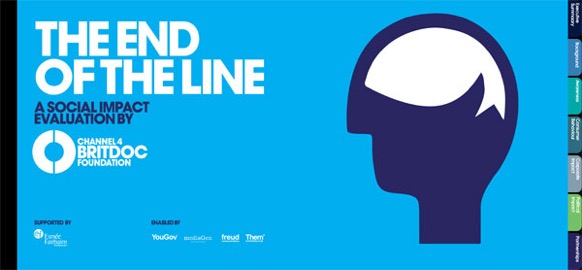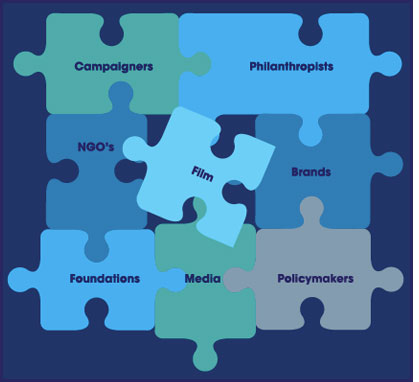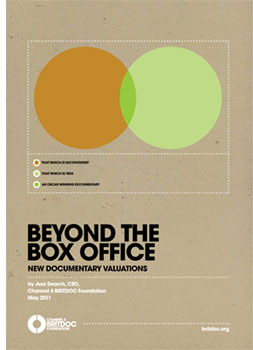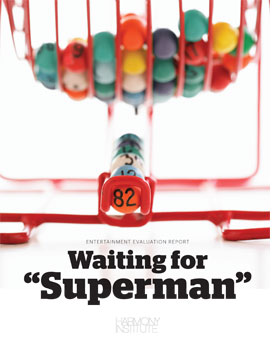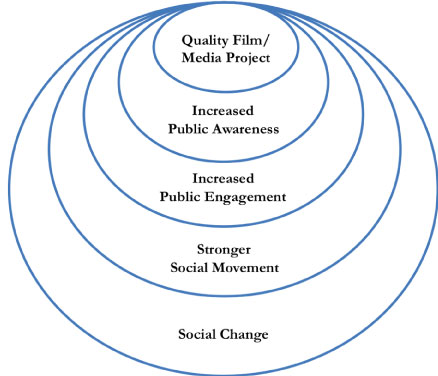I often look at Independent Film at a macro level seeking trends and ideas that might make my job of supporting it much easier. And from that perspective, it's not hard to find issues to address. However, that macro perspective does not preclude me from appreciating the micro - the little victories that keep us passionately invested in the success of Independent Film….and ever hopeful. But are those little victories just anomalies with no relationship the "the big picture?" When an indie film is compellingly made and/or earns revenue that benefits its investors, is its success repeatable or always a kind of accident - the result of a numbers game where so many indie films get made that one or two are bound to be well-realized and/or profitable?
The answer is sorta both. For me, it is not a question with a clear answer. And because there isn't a clear answer, the fact that indie film success is, statistically anyway, unrepeatable becomes a multi-faceted problem with a number of possible solutions. And although people like me will continue to blog relentlessly about it and offer up all kinds of solutions, I believe there is a core concept at the root of this problem and that, for me, is integration - or rather, the lack thereof.

I don't just mean cultural or ethnic integration, although Independent Film is certainly still principally the domain of the young, privileged, white male. That's just one manifestation of the issue. Independent film suffers from disintegration and disconnection in nearly every way. Education is disconnected from experience, talent is disconnected from resources, aesthetics are disconnected from technology, filmmakers are disconnected from investors, films are disconnected from their audiences, etc., etc. There's no irony, then, that a well-realized and successfully distributed indie film is almost always a gorgeous miracle of integration. All the various, sometimes disparate talents and disciplines that make up the filmmaking jigsaw puzzle come together seamlessly to create the film and then the film itself folds nicely into a marketing/distribution/delivery strategy that hits the mark with audiences. It doesn't happen often, but it happens. And when it does, there are always things to be learned by the process of integration that made success possible.
Now, I realize Independent Film is called Independent Film partly because it can't be systematized. It pulls itself in many different directions at the same time with a certain cowboy mentality that gives Independent Film its energy and charm. Filmmakers can burst onto the scene from seemingly nowhere using creative or entrepreneurial chutzpah, tearing up the festival circuit before fading away, striking gold in "the system" or becoming revered, if somewhat mysterious, iconoclasts. And the fact that such discoveries are so rare might be part of a necessary cinematic Darwinism, ensuring that the cream always rises to the top. I could accept all of that if there weren't so many easily correctable issues that could be addressed or if there weren't so many potentially strong and/or strong-performing films undone by simple ignorance or negligence. Precisely because Independent Film is so disintegrated that it can benefit hugely from a communal trough from which filmmakers can gain what they need. And that communal trough is the internet.
What? The interment? If anything suffers from disintegration, it's the internet itself. There are so many disparate sites, social networks, tools and apps splattered across the web that before you can figure out how best to use them all, one or more of them are obsolete. Even the mighty Facebook, judging from it's recent downturn in membership and the example of MySpace, may not be around forever. And, anyway, you can't make movies on the internet, can you?
Well, first of all, you can indeed make a movie on the web. Not any kind of movie, of course, but that's beside the point. What's more important to keep in mind is that not matter what any one site may offer filmmakers, the web is, and will always be, a giant repository of education, information, tools and resources - many of which can greatly enhance the filmmaking process if organized and used intelligently. More than that, it can be a powerful communal gathering point for people sharing a common goal. Especially if that goal is to make and distribute great independent films. But aren't there currently lots of great sites, tools and apps for filmmakers? Why isn't it galvanizing and rescuing Independent Film right now? Because it is, of course, missing one key ingredient: integration…along with the three most important elements of successful integration - curation, aggregation,and organization.
I realize none of those terms sounds even the list bit sexy, nor do they seem to have anything to do with the art of filmmaking. But they are important to anything you want to create for yourself, including all aspects of your life. So, I'll break it down for you. Obviously, you must always curate - make choices. Then, you must acquire the things you want. Then you must put those things where they do you the most good. It's a simple formula, but surprisingly ignored all too often in life and art.
First of all, curation. The stuff floating around the web that is really valuable to filmmakers needs to be found and selected - the best tools, apps, education and more. What is it that filmmakers need and what's the best incarnation of it? Communal editing space? Scroome. Film Festival submissions? Withoutabox. Virtual producer? Yet to be created. But something more than tools, apps and education needs to be found. We also need to find things that wrap all of that generic stuff into an ideological perspective that not only facilitates indie film viability but also the highest levels of creative ambition. What are the best blogs and forums? What kind of interface allows filmmakers to share ideas and perspectives? Someone or some group needs to act as a "trusted guide" for filmmakers - and not just a gatekeeper. Of course, there will also have to be community curation. Meaning, anything that exists on the site as a tool or resource should be open to review and feedback by users.
Secondly, aggregation. Once found and selected, all of this great stuff needs to be brought together. No one could possibly build from scratch or even recreate all of the great tools, apps and resources that exist for filmmakers out on the web. Instead, partnerships need to be created, which may also demand technological bridges to be built. The whole point is to avoid the needless hopping around from site to site, multiple logins and resource incompatibility that plagues filmmaking life on the internet at the current moment. But this is no easy task. Many sites charge fees for their tools/resources and/or jealously guard them for other reasons. They tend not to think holistically and instead stubbornly insist on trying to build communities around their single-purpose resource. So far, unless it is a indispensable resource without competition, such as Withoutabox, that approach has not served them. Hopefully, they can be made to see the wisdom in being part of a larger whole.
Thirdly, there is organization. You can't just throw stuff up on the internet randomly, although many sites seem to do it all the time, making finding things very difficult and efficient usage almost impossible. Ideally, resources, tools and apps can be organized intuitively for filmmakers - mirroring the process of production and/or film management. That means it all needs to be put together by a group that understands the way filmmakers - especially indie filmmakers - think and work.
Fortunately, there is an organization that can do all of that. Not only can do it, but will do it.
Filmmakers Alliance has been hatching a plan to for years to create just such a space for filmmakers. We've met with all manner of resistance and challenge, and the plan has been scrapped and rebuilt several times over, but we're still surging forward. We currently have a
Crowdfunding Campaign underway to help us push it through to a first stage launch. From there, it will evolve organically, driven by the participation of filmmakers/users. Our goal is to integrate the ongoing discussion about the state of indie film with the actual work. As discussed, we are building a site that is not just a tool, but a home for filmmakers - allowing them to not only access filmmaking and film management resources, but also exchange ideas and perspectives on filmmaking - all infused with a demand for creative ambition. We really want the community to challenge each other to take their films - and, subsequently, all of independent film - to the next level. The plan we have will facilitate it nicely with a lot of key partnerships and collaborative tools.
But why is any of this important? Simple. It will make filmmaking easier. There are many filmmaking orgs out there (along with various filmmaking sites), and they are there for a reason. Filmmakers need help. Lots of it. To this day, I get tons of calls and emails daily asking me for everything under the filmmaking sun. Clearly, filmmakers still need help educating themselves and accessing resources - anything from securing grants, to getting production insurance to finding good crews, to utilizing web marketing tools, to finding health insurance, etc. The easier we can make the filmmaking process, the faster we can move on to a conversation about the kinds of films we're making and how they can have a social and/or aesthetic impact on the world. And that conversation, too, will happen on the site.
A website is NOT going to save Independent Film, I'm told. Perhaps not in and of itself. Great independent filmmaking that is well-distributed will do that. But education, intelligent discourse, access to funding and resources, shared creativity and inspiration are all tools to help create those great, well-distributed independent films. And a site that provides and/or facilitates all of that will indeed do it's part to create an Independent Film renaissance. It can, at the very least, facilitate some necessary integration on all levels and bring a sense of cohesion to a very disintegrated community.
To see the crowdfunding campaign page, go
HERE.
If you want a bit more detail about Filmmakers Alliance's new website, go
HERE.
If you want to donate to the project, go
HERE.







